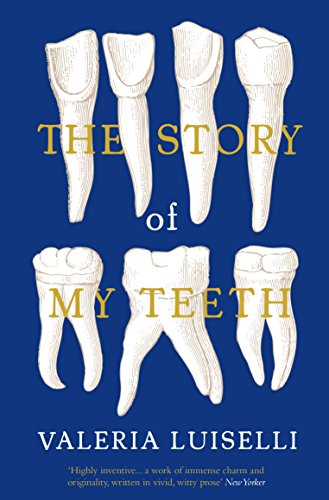Add these experimental authors to your to-be-read list now

A few minutes every morning is all you need.
Stay up to date on the world's Headlines and Human Stories. It's fun, it's factual, it's fluff-free.
Life is too short and books are too long to waste your time reading anything boring. With all of the innovation occurring in the global art community, it would be a misplaced belief to consider that literature isn’t also changing. Although books are a somewhat analog mode of entertainment these days, they’re still extremely relevant in the media sector. With the COVID-19 pandemic only surging the sale of print books, habitual readers are certainly not in decline.
But which experimental writers are really pushing the envelope? Who out there is twisting the medium of the print (and electronic) book to their advantage and really exploring the potential of traditional publishing? Luckily, we’ve been able to track down some of the most daring and experimental authors who are actively publishing new work. Take note, you’ll want to revise your to-read list. You can purchase experimental novels by these authors from an independent bookshop through Bookshop.org.
Yassin “Narcy” Alsalman – “Text Messages or How I Found Myself Time Travelling” (2020)
To find more innovative, subversive writers, you’re better off delving into the archives of an independent publisher or smaller printing house. This is certainly the case for finding Narcy’s first published work, “Text Messages or How I Found Myself Time Travelling.” This work is published by nonprofit Chicago press Haymarket Books. When you buy this book, you’re supporting the Center for Economic Research and Social Change.
An Iraqi-Canadian rapper, Narcy is already artistically established. “Text Messages" is, however, his literary debut. And he’s made a splash with it already. Part poetry collection, part novella and part graphic novel, each piece of “Text Messages" can be appreciated independently, but they’re better enjoyed together. A meditation on what it means to occupy the ethnic space between the East and the West – and how valid that binary actually is – “Text Messages” is compelling as well as profoundly strange.
By mixing genre and medium, Narcy explores how to tell the story of a Middle-Eastern existence in post-9/11 Canada, a story which seems to resist traditional modes of narrative. This book – and Narcy’s writing in general – will run circles in your head long after you’ve finished the final line. It’s enough to give you a sense of literary whiplash.
Gilbert Gatore – “The Past Ahead” (2012)

There’s only one English translation available of “The Past Ahead,” but it’s worth seeking out. Actually two stories told in alternating chapters, Gatore’s book is an exploration of the genocide in Rwanda through a postcolonial lens. The protagonist of one narrative “authors” the book’s other story. While relatively short, Gatore doesn’t stray from the disturbing themes that his narrative requires him to visit. And with oscillating chapters, this book is bound to give you whiplash.
Gatore’s experimental literature shines through in the mechanisms he uses to criticize European bureaucracy in the face of making amends in former colonies. “The Past Ahead” is largely a character study, but which of the two protagonists, exactly, are we supposed to study? And, who, exactly, is the antagonist?
Hari Kunzru – “White Tears” (2017) and “Red Pill” (2020)

Truly an engineer of narrative, Kunzru’s novels are always exactly what you need to read, even if you didn’t quite know it. He’s known for his works delving into complex sociopolitical and economic ideas, such as postcolonial Orientalism (“The Impressionist”) and a specific 21st-century brand of liberal racial fetishization (“White Tears”). Whether or not you’re actually well-versed in these subjects, Kunzru’s fiction is remarkable in how it draws in the reader, illustrating the microcosms of controversies within these complex subjects with relative simplicity and emotional investment.
In terms of experimental authors, Kunzru’s writing style is incendiary. He always takes the reader by surprise, his books veering into uncharted territory just as you think you’ve got a hold on the plot. With “White Tears” especially, you’ll need to take breaks every 20 minutes just to catch your breath from trying to catch up. Kunzru’s books are like black holes; you get instantly sucked in, but you don’t quite know where it is you’re gonna end up.
Valeria Luiselli – “The Story of My Teeth” (2013) and “Tell Me How It Ends” (2016)

There are few authors who have mastered both fiction and nonfiction writing to the degree that Luiselli has. Growing up in Mexico City but currently residing in New York, Luiselli offers an engaging and empathetic perspective on American immigration policy through her semi-memoir, semi-essay “Tell Me How It Ends.”
In this book, she details her experiences interviewing undocumented refugee children who made it to New York illegally during the Child Migrant Crisis of the mid-2010s. Her layered approach to discussing this complex political affair is as impressive as it is practical. And there’s nothing else like it.
Similarly, Luiselli’s experimental fiction chops are put on display through her refreshing novel “The Story of My Teeth.” Its title alone is enthralling. About an auctioneer who attempts to sell-off the teeth of famous people – or teeth he pretends belong to famous people – Luiselli’s novel is told as if she is auctioning the story off to the reader. Her innovative narration techniques and surreal (yet representational) premise leave much room for interpretation – as well as pure fun.
Have a tip or story? Get in touch with our reporters at tips@themilsource.com




Comments ()